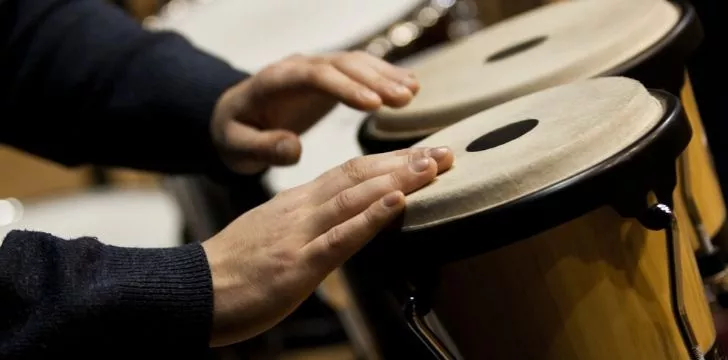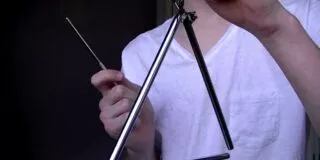Bongo drums are an instrument that is well known across the globe and you may have even had the chance to play.
But do you know where they come from and why they are such a popular instrument?
Here are 5 booming facts about bongo drums.
Bongo drums were invented in Cuba.
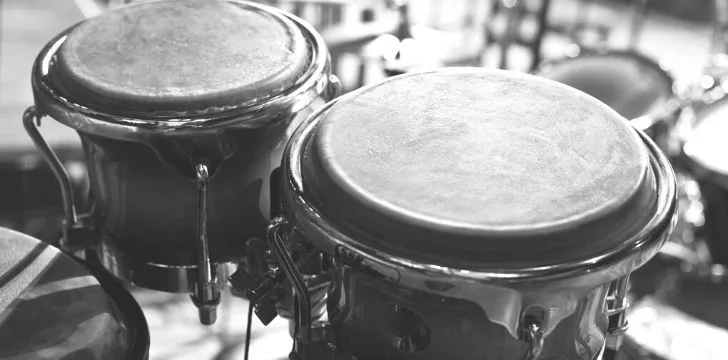
Although it is unclear exactly when and where the bongo drum was invented, documents suggest that it was invented in Cuba.
The Afro-Cuban percussion instrument was first documented to be used in eastern Cuba in the late 19th Century.
When slavery ended in Cuba in the 19th Century, African and Latin drumming merged and as a result many hybrid instruments were formed, the bongo drums being one.
The drums follow a traditional African design and the playing technique came from the Latin influence of using your hands.
In the early 1900s the bongo drums were introduced to western Cuba and became an influential part of the music scene in places like Havana.
In the 1930s as the jazz movement began to grow, the bongo drums became important part of American Jazz.
Bongo Drums always come as a pair.

Bongo drums are two circular drums attached together with a piece of wood. They are never sold separately and one drum is larger than the other.
The “hembra” which means female, is larger than the “macho”, the male drum.
The two drums are always played together and never individually.
On average most bongo drums have a diameter between 5.9-8.66 inches (15 -22cm).
The drums are traditionally made with animal skin and oak wood.
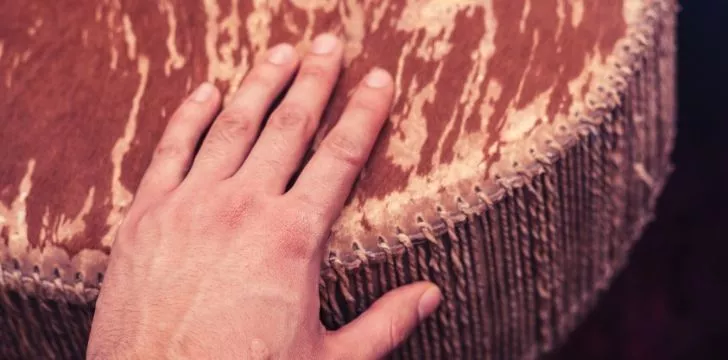
The shell of the drum is traditionally made from oak wood, although many variations today are made with other woods.
The skin of an animal, traditionally rawhide would be used to form the drum on one end of the wooden shell.
Some more modern drums use synthetic skin.
The other end of the drum is left open, this allows for the booming echo to be created when the stretched skin is tapped by the player.
A Bongosero is someone who plays the bongo drums.
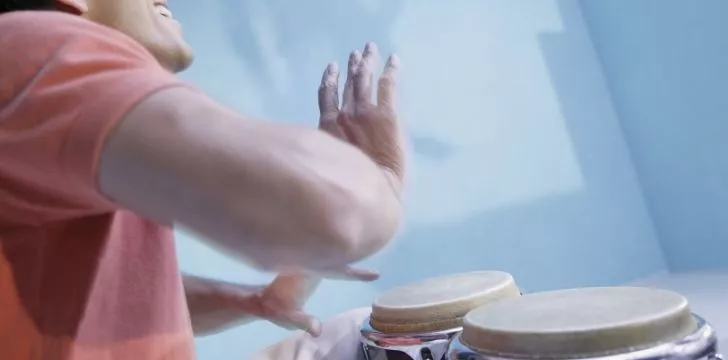
The bongosero is the player of the bongo drums.
When the bongosero is setting up, the drums are placed between their legs if they are sitting cross legged, or placed on a stand if they are standing during playing.
Traditionally the “hembra” drum, the larger of the two, should be placed on the side of the bongosero’s dominant side.
The bongosero traditionally could change the pitch of their drum by heating it to remove moisture making the skin tighter, or by moistening the skin with water to make it looser.
Bongo Drums are played with your hands.
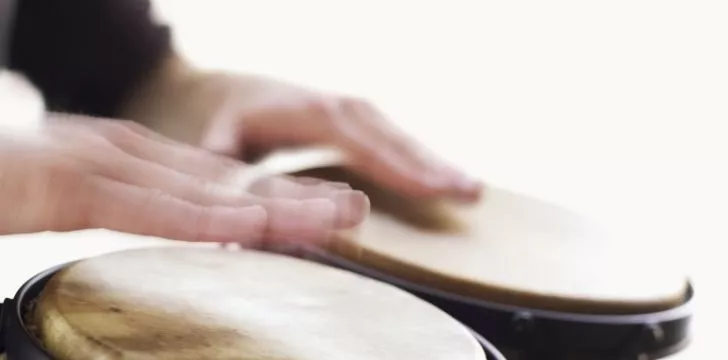
Traditionally you would use only your hands to play the bongo drums.
The player will use their fingertips, thumbs and heels of the hands to tap on the drums.
Knuckles are never used, mostly because they create an unwanted tone but using them can also damage your hand over time.
There are 4 basic hand strokes used when playing the bongo drums and they are called mute tone, open tone, slap tone and heel-toe.
Although there are many standard rhythms that have been created for playing bongo drums as percussion instruments, they are traditionally also used for solos.
There is a vast mix of sounds and tones that can be created between the two drums, this enables a diverse solo to be produced.
The bongo drum is an important percussion instrument across many cultures as the bass for music.
Next time you can get your hands on a pair of bongo drums, why not have a go and see if you can make some booming tunes.
